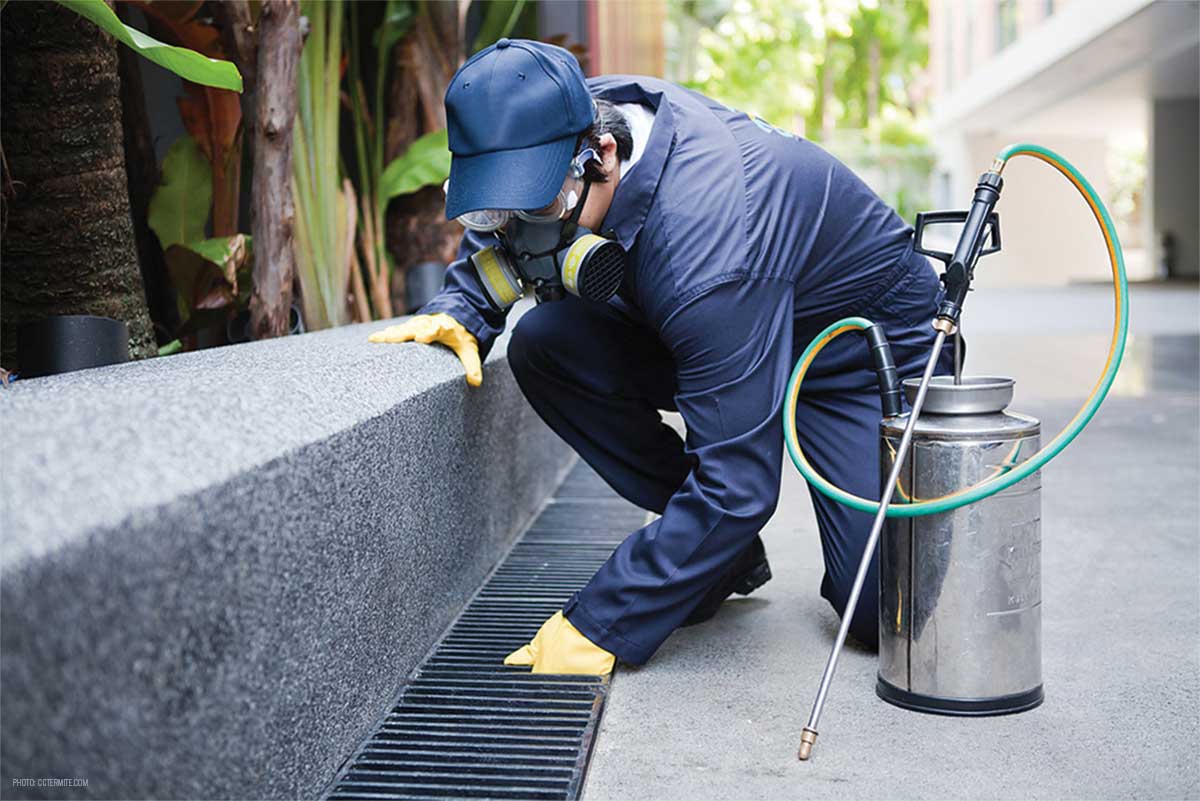Bed Bug Dog Detection: Find Infestations Early for Assurance!
Bed Bug Dog Detection: Find Infestations Early for Assurance!
Blog Article
Professional Pest Control Techniques for Long-Term Outcomes
Professional bug control techniques envelop a thorough strategy that begins with a thorough examination and evaluation, followed by specific bug identification to understand their habits patterns. The implementation of Integrated Bug Monitoring (IPM) concepts, paired with eco-conscious therapies, forms the keystone of sustainable parasite elimination.
Assessment and Assessment
Upon going into a property for parasite control solutions, the first step is an extensive inspection and evaluation to identify the degree of the problem and figure out the most effective treatment plan. Professional parasite control specialists are trained to carefully take a look at the premises, seeking indicators of parasite activity such as droppings, munch marks, nests, or any structural damages. They will certainly also evaluate the problems that may be bring in bugs, such as food resources, water leaks, or entrance points.

Pest Identification and Behavior

Additionally, recognizing the behavior of the determined bug is essential to carrying out reliable control measures. Knowing where bugs nest, what they feed on, and their activity patterns can assist pest control professionals create techniques to eliminate them efficiently.
Integrated Bug Administration (IPM)
Integrated Pest Management (IPM) methods integrate several strategies to regulate and prevent insect invasions in a lasting and environmentally friendly manner. exterminator. By integrating methods such as biological control, habitat control, alteration of social methods, and the use of resistant ranges, IPM aims to minimize making use of chemical pesticides
One of the essential principles of IPM is the emphasis on prevention. This aggressive technique involves monitoring pest populations on a regular basis to detect any type of prospective problems prior to they intensify. By recognizing insect issues beforehand, pest control actions can be implemented promptly and successfully.
Furthermore, IPM advertises the usage of non-toxic parasite control methods whenever possible. This can include employing all-natural predators of the insects, presenting advantageous pests, or utilizing pheromones to interfere with mating patterns. By reducing reliance on chemical pesticides, IPM not just protects the atmosphere but additionally assists maintain an equilibrium in the ecosystem.
Environmentally-Friendly Therapies
Executing eco-conscious strategies in pest control treatments can effectively address problems while prioritizing ecological sustainability. Environmentally-friendly therapies concentrate on reducing the effect of bug control approaches on communities, non-target microorganisms, and human wellness. These techniques typically entail the usage of all-natural predators, such as i was reading this ladybugs or nematodes, to control pest populations, lowering the need for chemical treatments. Furthermore, strategies like habitat adjustment, such as adjusting wetness levels or getting rid moved here of food sources, can assist deter pests without using unsafe materials.
Another trick aspect of environmentally-friendly treatments is making use of natural and eco-friendly products that damage down quickly without leaving dangerous deposits in the environment. Herb pesticides stemmed from plants like chrysanthemums or neem supply reliable bug control while posturing very little danger to non-target species. Using methods like warmth therapies or pheromone traps can target certain bugs with precision, lowering the total ecological impact of pest control methods.
Ongoing Surveillance and Upkeep
Normal evaluations by skilled specialists are essential to identify any indications of pest activity, analyze the performance of previous treatments, and make adjustments to the pest control plan as required. By keeping an eye on bug populaces over time, insect control specialists can track fads, anticipate prospective issues, and execute precautionary steps to minimize the threat of future infestations.
Along with monitoring, maintenance techniques are vital for long-lasting parasite control success. This includes executing correct sanitation actions to eliminate potential food and water sources for insects, sealing off entry factors to stop parasites from getting in the premises, and addressing any type of structural problems that can promote bug infestations (bed bug dog). By including recurring monitoring and upkeep right into an incorporated pest monitoring approach, services can ensure a pest-free setting and secure their Related Site residential property versus pricey damages and wellness threats
Conclusion
Finally, making use of expert bug control techniques such as comprehensive inspection and evaluation, accurate insect recognition and understanding of their actions, integrated insect administration strategies, environmentally-friendly therapies, and recurring tracking and upkeep are necessary for achieving long-term outcomes in parasite control. By applying these approaches, individuals can successfully manage bug problems and keep a pest-free environment in a sustainable fashion.
Report this page